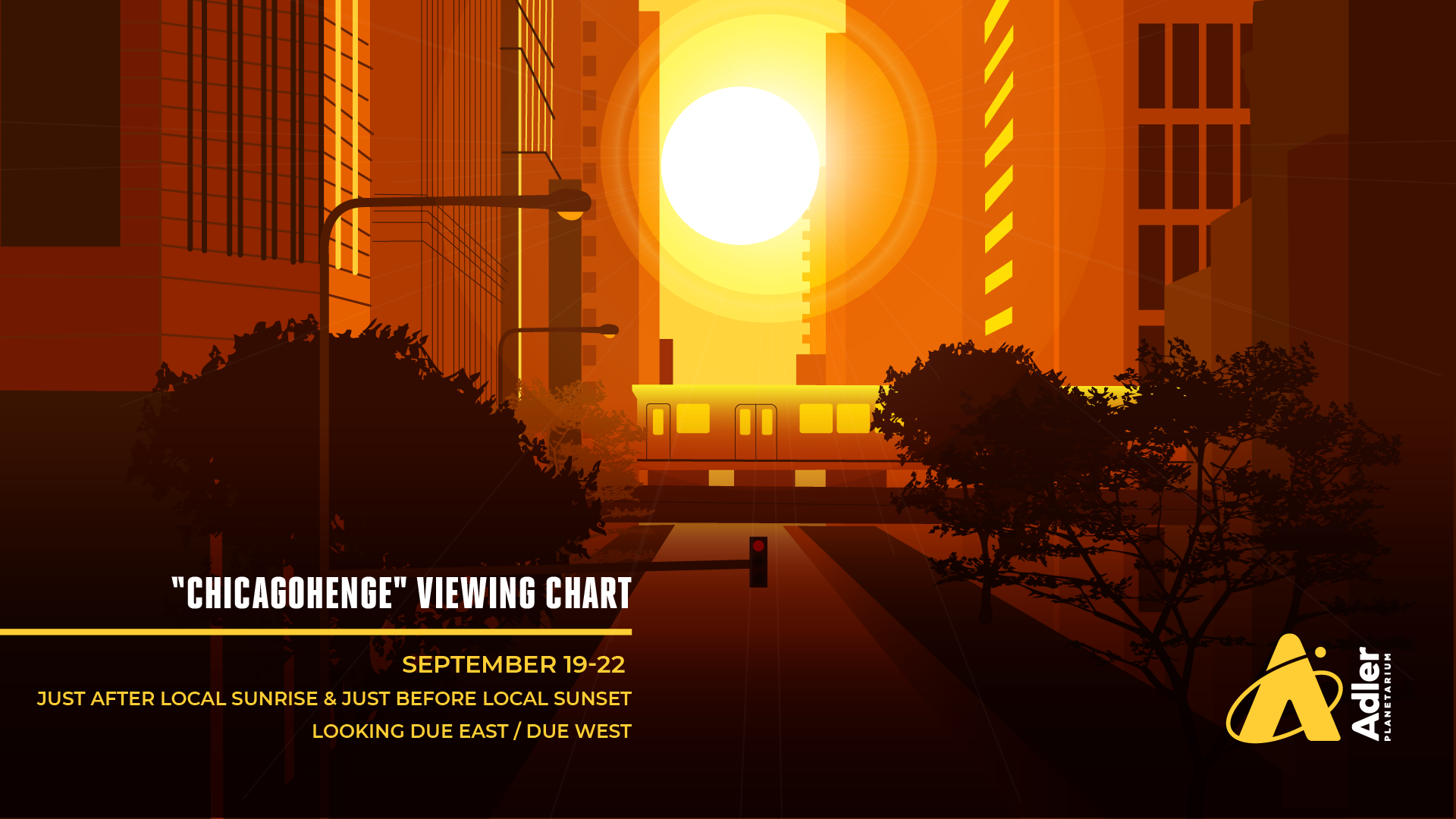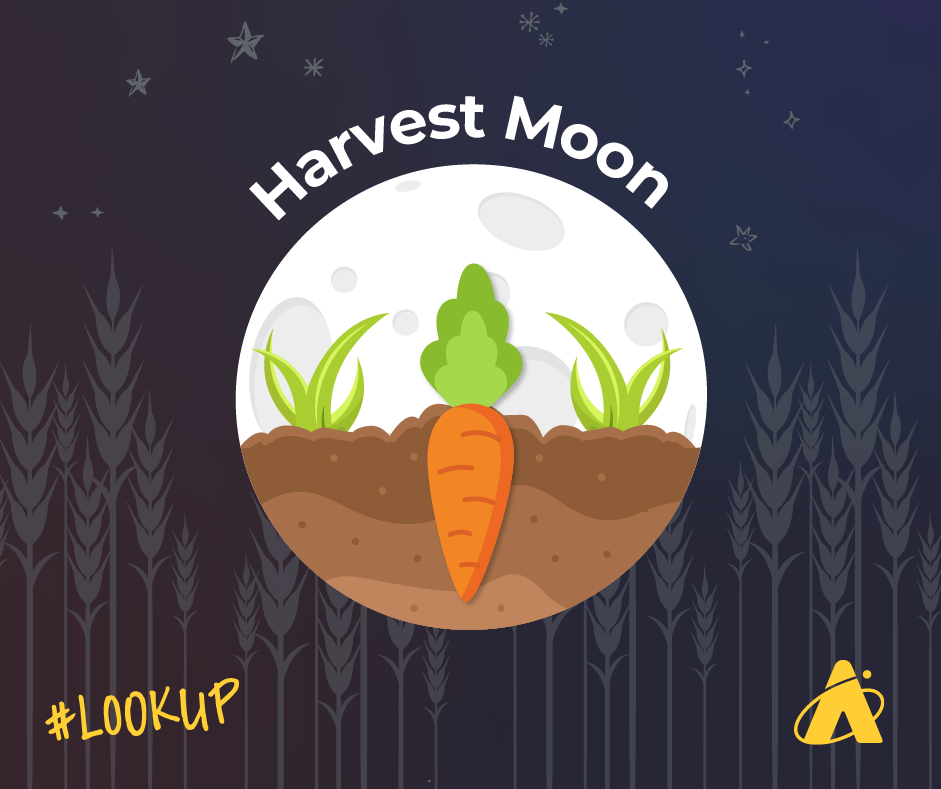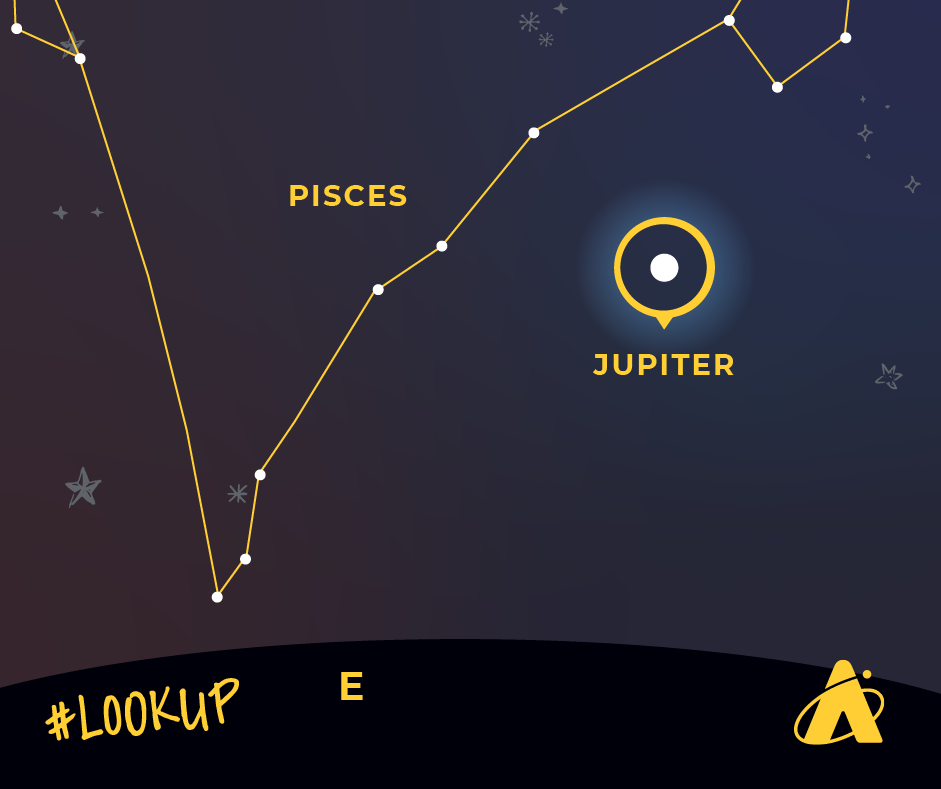Adler Skywatch: September 2022

Header image: Adler Planetarium graphic depicting the fall celestial event, Chicagohenge.
Astronomical summer ends and the season of fall starts this month, September 2022. Here’s your stargazing guide for spotting daytime and nighttime celestial events as the seasons change and the nights grow longer.
See Autumn’s Chicagohenge
This month the Sun sets about 50 minutes earlier at the end of the month than it did at the end of last month. So you can probably tell the season of fall is imminent. This year, the northern hemisphere’s autumnal equinox takes place on September 22, at 8:04 pm Central Daylight time. On the autumnal equinox, daytime and nighttime hours are roughly equal, and the Sun rises due east and sets due west. Because of this solar positioning, it’s one of the two times in the year to look for the local sky phenomenon of “Chicagohenge”—when the Sun on the horizon is framed by high-rise buildings along east-west-running streets. Look for Chicagohenge just after sunrise and just before sunset starting a few days before and on the day of the equinox. WARNING: As always, do NOT look directly at the Sun, or you risk permanent eye damage.

“Shine on Harvest Moon…”
Another sky occurrence affiliated with fall is the Harvest Moon, which is the traditional name for the full Moon that’s closest to the autumnal equinox. Occasionally, the Harvest Moon occurs in October, as it did in 2020, 2017, and 2009; but usually, it occurs in September. The Harvest Moon falls on September 10 this month.

Planet-Spotting in September 2022
During early-evening twilight this month, look about 20 degrees above the southeast horizon to spot the planet Saturn. It shines at nearly zero magnitude this month. The nearest bright stars to it—Altair (in the constellation Aquila) to its northwest and Fomalhaut (in the constellation Piscis Austrinus) to its southeast, are slightly dimmer than Saturn this month. The nights of September 7 and September 8, it’s not far from a waxing gibbous Moon. Saturn gets barely 30 degrees above the southern horizon at its highest. It’s low in the west-southwest around 4:00 am CT at the start of the month, and about 2:00 am by month’s end.
The planet Jupiter rises in the east about 8:30 pm CT at the start of the month, and about 7:00 pm by the end of the month. It’s very bright—almost minus three magnitude this month—and by midnight, it’s higher in the sky than Saturn. On the evenings of September 10 and September 11, the Moon (full on September 10, waning-gibbous-phase on September 11) appears not far from Jupiter. On September 26, the planet will reach opposition, which means it will lie in the sky opposite of the Sun. The planet will be visible much of the night, reaching its highest point around midnight. The planet reaches nearly 50 degrees high in the south during early-morning darkness. Jupiter fades from view low in the south-southwest skies around 6:00 am early in the month; later in the month, it sets in the west just before dawn.

The planet Mars rises in the east-northeast shortly before midnight CT at the start of the month, and by about 10:30 pm by month’s end. Unlike the planets Jupiter and Venus, which are always brilliant in the night sky, Mars can be bright or not-so-bright, depending on its position in relation to the Sun and Earth. This month, it’s very bright, outshining the red-giant star Aldebaran, in the constellation Taurus, which appears near Mars. As the planet Jupiter is sinking toward the west-southwest horizon during morning twilight, Mars is riding high in the southern skies. Look for a waning gibbous Moon next to Mars in the morning darkness of September 16.
The Inner Planets, Mercury and Venus, appear very close to the Sun in the sky this month, and so they are very difficult or impossible to see.
Moon Phases
First Quarter Moon: September 3
Full Moon: September 10
Last Quarter Moon: September 17
New Moon: September 25
Please note that these descriptions are for the Chicago area, using Central time.
Subscribe To Skywatch Wednesday This September
Tour the night sky with the Adler Planetarium’s Theaters Manager Nick, who uses cutting-edge visualizations, NASA images, and astrophotography to show you what you can see in the night sky throughout the year.






